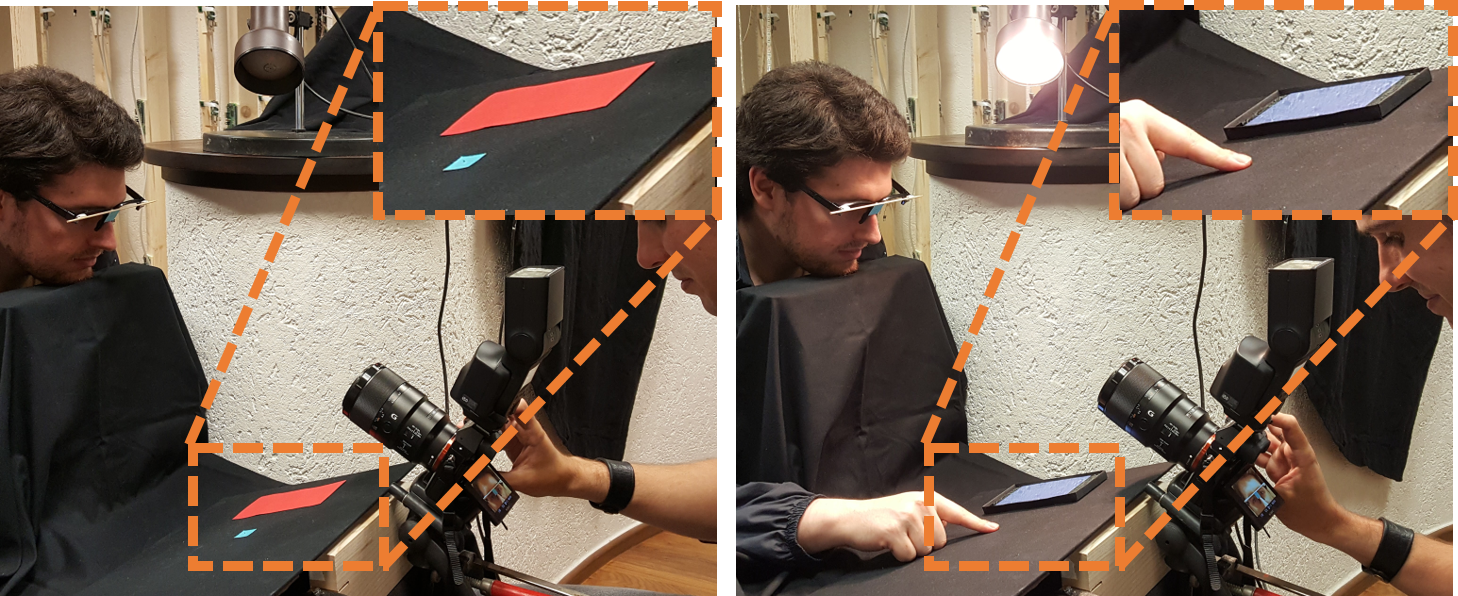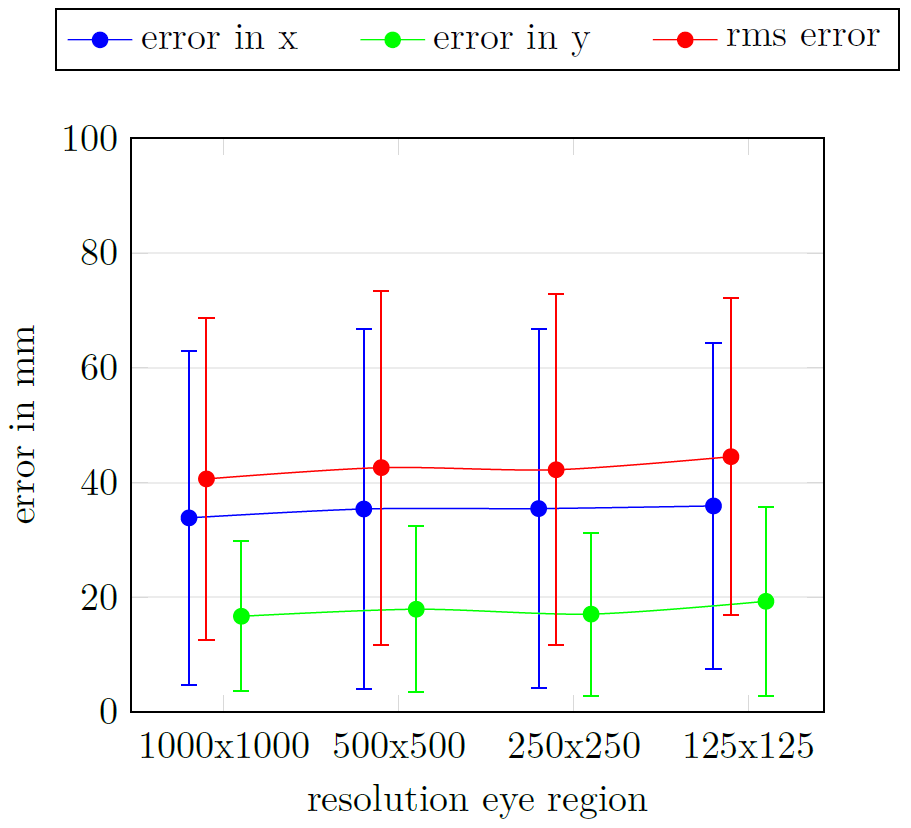Around-Device Interaction using Corneal Imaging
Abstract
Around-device interaction techniques aim at extending the input space using various sensing modalities on mobile and
wearable devices. We aim at
extending the input area of mobile devices using
front-facing
device-centered cameras that capture
reflections in the human eye. As current generation mobile devices lack high resolution front-facing cameras we study the feasibility of around device interaction using corneal reflective imaging based on
a
high resolution camera. We present a workflow, a technical prototype and an evaluation, including a migration path
from high resolution to low resolution imagers. Our study indicates, that under optimal conditions a
spatial sensing resolution
of 5 cm in the vicinity of a mobile phone is possible.
Media

Results of single steps of the pipeline, (a) original camera picture, (b) eye region, (c) eye region with limbus, (d) Unwrapping result, (e) Object detection (red and blue rectangle) (f) distance of objects.

Setup of the laboratory study. Left: Condition with red rectangular and blue marker. Right: Condition with smartphone
and finger.

Errors (x, y, RMS) across all resolutions for condition with red rectangular and blue marker.
Publications
- Daniel Schneider & Jens Grubert. Towards Around-Device Interaction using Corneal Imaging. In Proceedings of the 2017 ACM Conference on Interactive Surfaces and Spaces (ISS 2017), Brighton, UK, pp. 287–293.
arxiv preprint | DOI
- Daniel Schneider & Jens Grubert. Feasibility of Corneal Imaging for Handheld Augmented Reality. n Adjunct Proceedings of the 2017 IEEE International Symposium on Mixed and Augmented Reality (ISMAR 2017), Nantes, France, pp. 44-45.
arxiv preprint
| DOI


